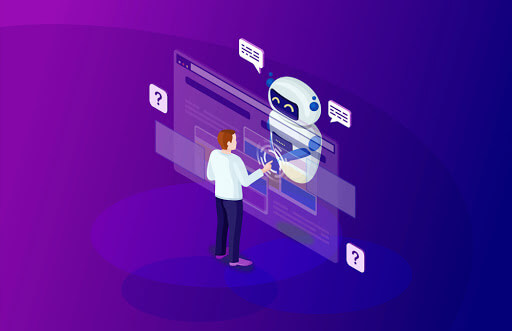Why AI-powered customer service is the future of collections
- December 12, 2019
- Category: Agent Performance

Recommended Reading
Today’s customer has higher expectations and lower patience — they want their problems solved as quickly and efficiently as humanly (or artificially) possible.
Today’s consumer is on the go — if she opens a book on her laptop and closes it, her iPad will pick it up from the same page. She transitions seamlessly and multiple times between her laptop, smartphone, tablet, and even her smartwatch. This is how she communicates — and when she has problems, this is how she likes to solve them — quickly, and on her own.
Multichannel interactions can be a challenge for brands — especially with the deluge of new sources where the customer needs to be offered service. But with the right technology, an omnichannel front that allows customers to be self-serviced (after all, there’s a reason fast-food restaurants work so well) can be a powerful tool and differentiator.
A Problem for one, Opportunity for another
Brands have realized that this digital self-service has become (and will continue to) be an important gateway to achieve true digital customer engagement, and mining this data through machine learning and artificial intelligence can truly transform their collections.
After all, AI is the new OS powering the digital world — an operating system that strives for optimum efficiency.
Debt collections and recovery isn’t something that is devoid of the prowess of Artificial Intelligence. Let us look at some applications of AI and automated customer service in the future of collections:
Improved customer satisfaction using self-service chatbots and AI-powered agents
“Play me a romantic song, Alexa”

According to PwC, speed and convenience hit over 70% importance to consumers. Chatbots can integrate anywhere, and when these virtual bots can handle a large chunk of automated, repeated customer questions and requests, agents are free to focus on more complex situations needing some of that irreplaceable human intelligence. The result? Better service, more automation, and increased overall efficiency.
Reduced hold times, increased speed of issue resolution
In a survey of more than 3,000 customers, 65% believe that anything more than 45 seconds is too long to be kept on hold.
It’s clear that customers don’t appreciate being on hold for too long, and it contributes significantly to their overall satisfaction. Call analytics gives you the power to review these calls much more efficiently. Is it because the agent is not efficient with query-resolution? Or is it that the customer isn’t too sure about what he’s asking?
AI-powered agents have the capability to potentially identify the reason for the call and predict the most accurate resolution. It can even identify stress in the customer’s voice, or the number of times she sounds angry. This is an important aspect to consider when talking about improving customer experience — the tone is likely to indicate many things that the customer isn’t saying but implying. This is more effective management than just browsing the transcripts of calls.
You can identify crucial patterns that’ll let you know the precise reason for these hold times.
Empowered customers through automated, self-service apps
An Aspect Software survey found that 65 percent of customers feel good about themselves and a brand when they are able to resolve issues themselves, rather than talk to customer service.
In fact, Kate Leggett in her blog Forrester’s Top Trends For Customer Service In 2015 revealed that “web self-service [a.k.a digital self-service] was the most widely used communication channel for customer service, surpassing the use of the voice channel for the first time.
It’s better for the company as well since it reduces overhead costs and improves agent productivity for more challenging situations.
Enhanced agent efficiency, better resource management

With carefully crafted workflows that gather data at each part of an agent’s interaction with the customers, agent efficiency can be boosted for collections. Not only does it help supervisors to identify gaps, but it can also be used to provide customized training and feedback to each collector.
Data-driven decisions are the right ones. However, the credibility of the data being used is just as important. With ICAP, floor level performance can be evaluated with more accurate and reliable metrics such as “average productivity” and “average compliance score”.
Instead of wasting your time in finding new agents, you can identify the weakest points of your agents and tailor training to help them deal with their weaknesses. Or even better, know the strengths of your agents utilize them better.
You can easily spot agents that aren’t being proactive or performing satisfactorily. In the end, when all the agents are performing their best, the customers will spend less time on call and hang up satisfied.
Artificial Intelligence is helping the collections industry evolve from glorified data entry to strategic decision making and driving change.
Understanding the impact that AI makes in the collections industry will be important for taking you to the runway. However, it would be crucial to act on this understanding and take action for your collections to soar. Speak to us at Provana to know more!







